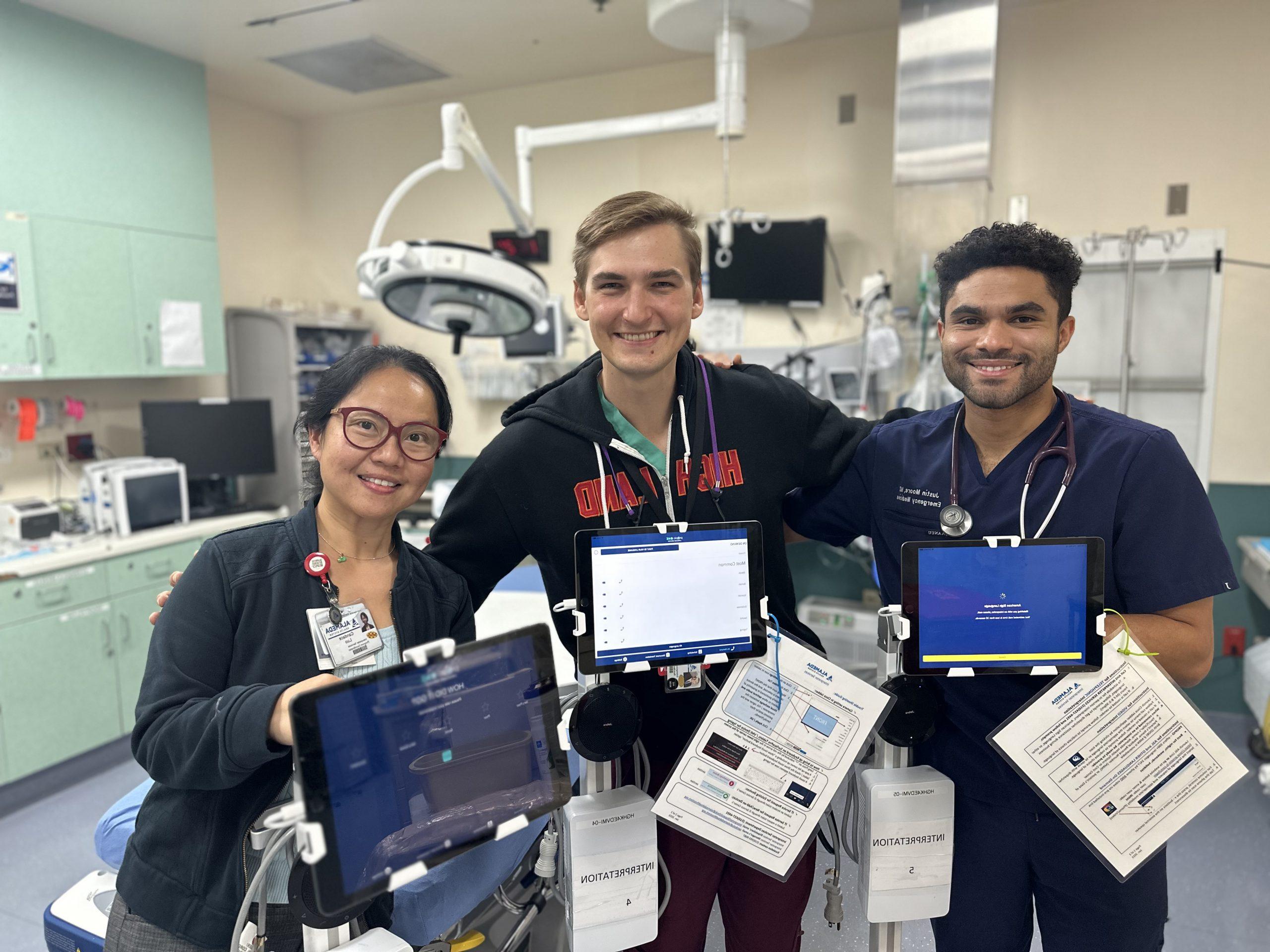A new supply of iPads equipped with video interpreter services is making it easier for patients who don’t speak English to communicate with their providers at Alameda Health System (AHS).
“They are a complete revolution for the Emergency Department,” said Dr. Jeffrey Herrala, an emergency medicine physician at The 澳门新葡京 Chan Highland Hospital Campus.
Alameda County is one of the most ethnically and linguistically diverse counties in the United States, and many AHS patients arrive with limited ability to communicate in English. AHS’s Department of Interpreter Services provides in-house interpretation in 10 languages, either in person or remotely, and offers access to on-demand, remote interpreters of up to 300 languages.
Remote interpretation requires technology, typically a phone, and technology introduces complications. Physicians and patients often experience difficulty hearing, understanding one another, or even holding phones during critically important and time-sensitive interactions.
“It was time for an equipment upgrade,” said Sambo Ly, manager of interpreter services. “We partnered with physicians in the emergency department before we decided on this particular iPad. Dr. Herrala really stepped up to tell us the issues he’s encountered, and we worked to address those issues. He really cares about communication with patients and understands the barriers.”
The new iPads are configured with a video interpretation application called Propio. AHS interpreters are still the first line of interpretation – via the app or in person – but Propio provides an additional roster of interpreters who can be pulled in as needed.
“The ease of use is a game changer,” said Dr. Justin Moore, director of emergency department innovation at AHS. “Just being able to get an interpreter with one click of a button saves a significant amount of time for each provider each day.”
Providers say that their patients seem to like the experience of using the iPad and that they’re able to communicate more expressively.
“It feels as if the lens I was looking through before was extremely narrow. And suddenly, it’s a lot wider,” said Dr. Herrala.
The iPads are especially useful for patients who use American Sign Language (ASL). Dr. Herrala recently received an ASL-speaking patient who came in complaining of dizziness, a notoriously complicated symptom to treat because it can be caused by a wide range of potential diagnoses – from mild dehydration to stroke.
“This patient had a very, very detailed description of her dizziness symptoms, and I was able to diagnose her with vertigo. Without the video interpretation and a better history, it could have easily been stroke and would have meant her coming to the hospital unnecessarily. With vertigo, you can go home with exercise and medications versus an unnecessary hospitalization for an MRI and neurology consultation, which would have been tedious for the patient,” he said.
Several of the new iPads are circulating now, and another 194 will be rolled out across the system soon.
Dr. Herrala says the iPads are an example of providers speaking up to advocate for resources that can have a significant impact on patient care and a responsive administration that’s listening.
“Your voice will be heard,” he said. “The leadership here really cares.”

